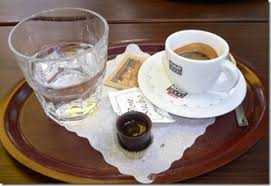Most countries have accepted the U.N. Millennium Development Goal, set at the 2008 G8 Evian Summit, of halving by 2015 the number of people worldwide who do not have access to safe water and sanitation—a goal that is on track to be reached.
The proportion of people in developing countries with access to safe water is calculated to have improved from 30 percent in 1970 to 71 percent in 1990, 79 percent in 2000 and 84 percent in 2004. This trend is projected to continue.
Still, some estimates predict that by 2025, more than half of the world population will be facing shortages of clean water.
Availability of clean
water is a major
spcial and economic
concern, especially as
the human population
grows
But innovation is already in the works. New technologies inspired by nature are alreadybeing used to tap water from thin air—literally.
One is WatAir, an inverted pyramid array of panels that collects dew from the air and turns it into freshwater in almost any climate. Inspired by the dew-collecting properties of leaves, WatAir is low-tech, and could make clean, safe water available to millions around the world.
New technologies inspired
by nature are already
being used to tap water
from thin air-literally
A similar method has been pioneered by Aqua Sciences, with a device that is apparently the first to function well in harsh climates, since its usability is not tied to humidity. The company is keeping the details of its technology under wraps, but a spokesperson did divulge that it “mimics nature, using natural salt to extract water and act as a natural decontamination.” The method could prove far more efficient and inexpensive than trucking in bottled water to dry climates, or in the aftermath of natural disasters such as the 2004 tsunami, where the greatest immediate need was safe drinking water.


















